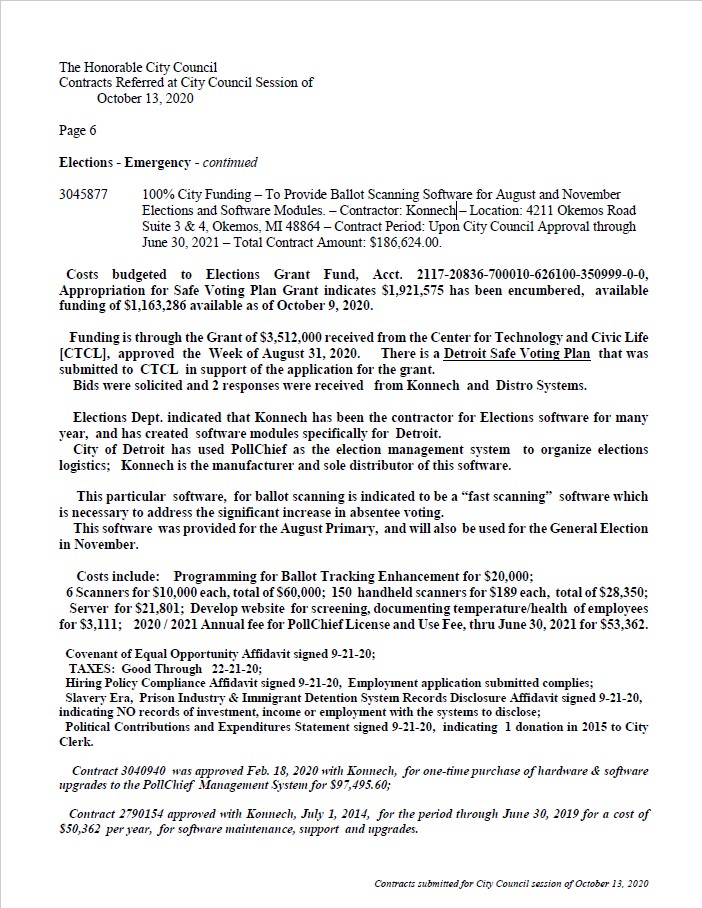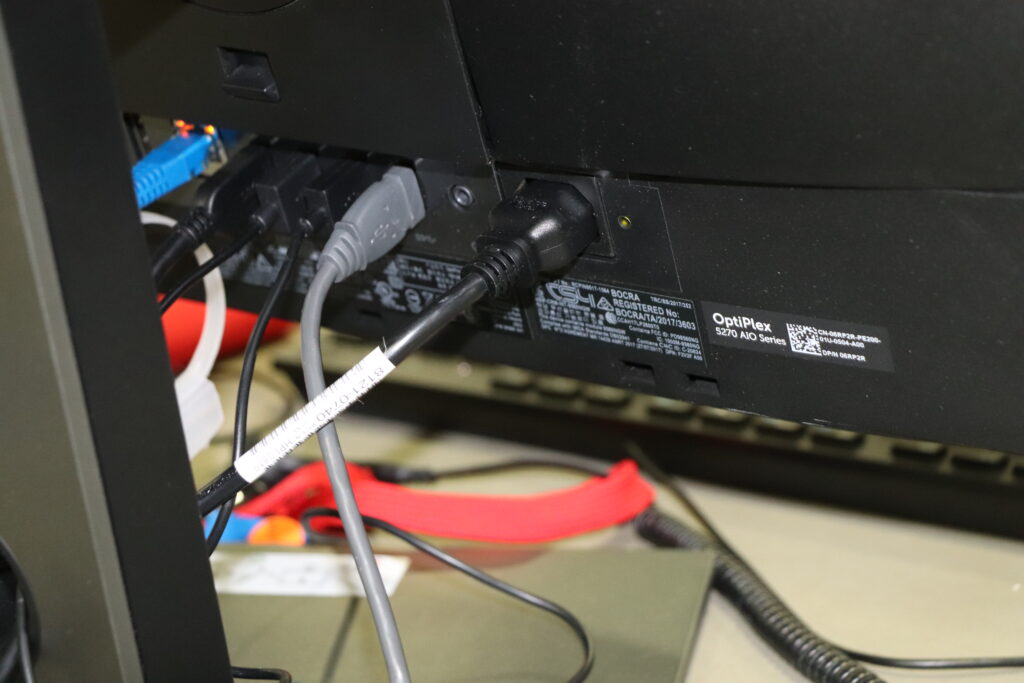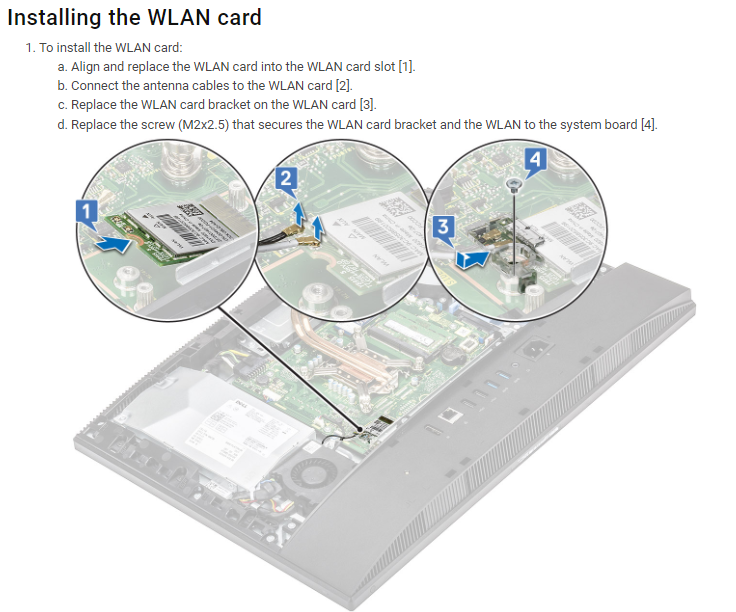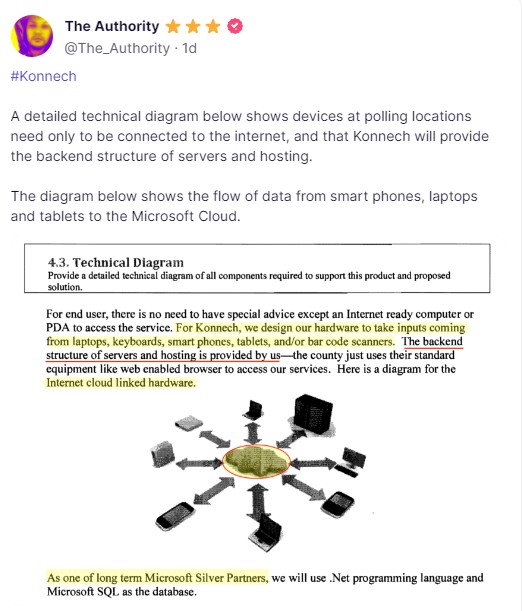By Patrick Colbeck
Yes. Election equipment is routinely connected to the internet all across America. Sometimes it connects via Wi-Fi. Sometimes it connects via hardwired ethernet connections. Sometimes it connects via cellular networks. Sometimes it is only connected sometimes. Sometimes it is connected throughout the election. No matter the method, no matter the duration, election equipment is routinely connected to the internet. These connection capabilities are boldly proclaimed in the user manuals and contracts of election equipment providers.
So why is there such a uniform mantra from election officials denying that election equipment is connected to the internet?
Because internet connections pose significant security risks.
These security risks include:
- Access to private information
- Man-in-the-Middle attacks in which data is modified at point C while in transition from point A to point B
- Destruction of records
These security risks do not inspire public confidence in elections featuring equipment connected to the internet.
Without public confidence in our elections, the entire fabric of our constitutional republic will eventually unravel. In other words, there is quite a bit at stake for those who love America.
So, rather than admit that our election equipment is connected to the internet and take appropriate action to mitigate the associated security risks, government officials and their accomplices in the media have chosen to hide the truth and demonize anyone perseverant enough to expose the truth.
This denial of the truth by government officials has resulted in the manifestation of the very security risks they often deny are even possible.
Case in point.
PIT Revelations
On August 13, 2022, Gregg Phillips and Catherine Engelbrecht held an event in an undisclosed location near Phoenix, Arizona called “The PIT” (Ps 94:13). There were many revelations provided to attendees of the event that point to election security risks having become election security issues. I would like to focus upon one security issue in particular.
It is no secret that the Chinese government has been in a Cold War with the United States for years. They have been following a doctrine of “unrestricted warfare”. Nowhere is this doctrine more evident than in cyberspace. According to Chinese cybersecurity law passed in 2017, the Chinese government can request and control all information collected and stored in China.
That is why the PIT revelation that they discovered a China Unicom server with data pertaining to 1.8 Million US poll workers is so concerning. The server appears to be used to host software and data related to a company called Konnech, Inc.
Konnech Software
Konnech Software provides a suite of Resource Management Tools that help election officials manage the personnel, facilities, and equipment needed to execute an election. The information managed by this tool would be quite useful to any intelligence agency seeking to influence elections.
All that’s needed to access Konnech software services is an “internet ready computer or PDA”. Konnech hardware (e.g. Fast Ballot Scanners) can “take inputs coming from laptops, keyboards, smart phones, tablets, and/or bar code scanners.”
High speed scanners provided by Konnech would only need to connect to one of these “input sources” to have access to the data on these “input sources”. These “input sources” consequently become “input sources” for any agency within the Chinese government as a result of their 2017 law.
The 2020 election features numerous reports of lax security protocols being used to protect DHS has classified as a Critical Infrastructure Component – our elections. These lax security protocols extend to the use of Konnech’s PollChief software.
One of the reasons that evidence of internet connections is so concerning is because they are the weakest link in any election management system. All it takes is for one link to be broken for the integrity of the whole system to be compromised. As the post by @CognitiveCarbon reveals, the Konnech Software Platform is a very weak link.
Konnections
So how did Konnech get access to our election data?
One of the portals was the Detroit City Council. Using funding provided by the Center for Tech and Civic Life (CTCL), they authorized the purchase of “fast scanning” ballot software provided by Konnech.

What is particularly interesting is that the City of Detroit already had high speed scanning systems in place for the elections. Their Relia-vote Solution is designed to scan and process incoming absentee ballot envelopes. Their Dominion ImageCast Central workstations is designed to scan and tabulate incoming absentee ballots. So why would they need another software platform for “ballot scanning” – ballot scanning, by the way, not evaluated during public accuracy tests?
Inquiring minds would like to know.
What have inquiring minds found?
On what is probably a totally unrelated topic, did you know that the FCC labels affixed to the tabulator workstations used for fast scanning of ballots at the Detroit Absentee Vote Counting Board indicate that Intel 9560NGW Wireless/Bluetooth PCI Cards were installed?


Installation Guide for Intel 9560NGW Wireless/Bluetooth PCI Cards
Could the ImageCast Central workstations in use at the Detroit Absentee Vote Counting Board (AVCB) be one of the “input sources” used by Konnech Software to share data on Detroit elections with the CCP? Perhaps. There are numerous other “input sources” available at the Detroit AVCB including the laptops used for electronic pollbooks or by election officials sitting on a platform inaccessible to poll challengers. Without access to these potential “input sources”, we may never know.
CONCLUSION
The integrity of America’s elections are compromised by any election equipment that is capable of connecting to the internet. As the complexity of election equipment increases, private contractors not subject to transparency provisions under the Freedom of Information Act (FOIA) are increasingly utilized. This lack of transparency regarding this equipment inspires even less confidence in the integrity of our elections. Unless the public is granted unfettered access to inspect election equipment before and after elections, we need to eliminate all electronic election equipment and go back to counting ballots by hand.






Thank you Patrick for your tireless work to discover the truth and try to secure our elections and save our Republic from the CCP! You remain in my prayers as you continue to fight for the freedom of all Americans.
Thank you for your article. Just yesterday, a county Commissioner told me via email that the cellular call from their ES&S DS200 “never rides on the internet.” Would the manual prove this wrong? Or should I look somewhere else? Dr Frank just shared the story about asking US clerks if they’d allow him to use his sensor to test snd see if the machine was on. All refused.